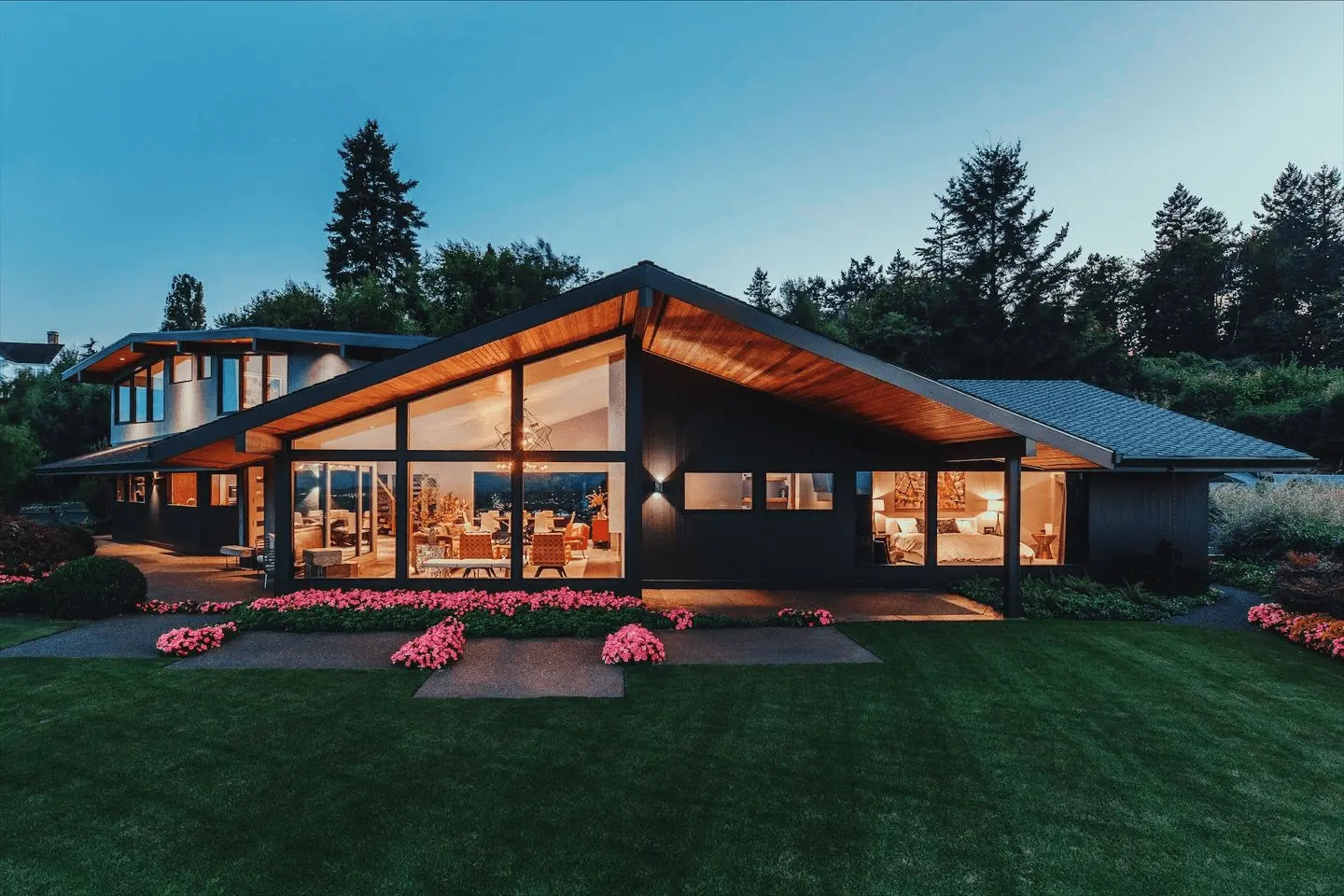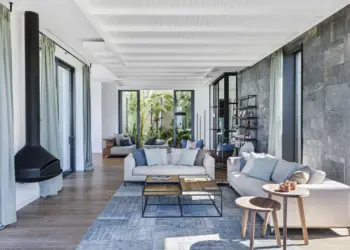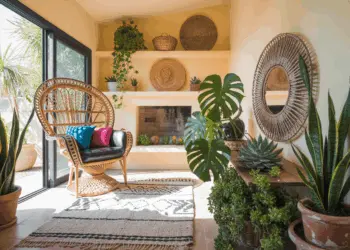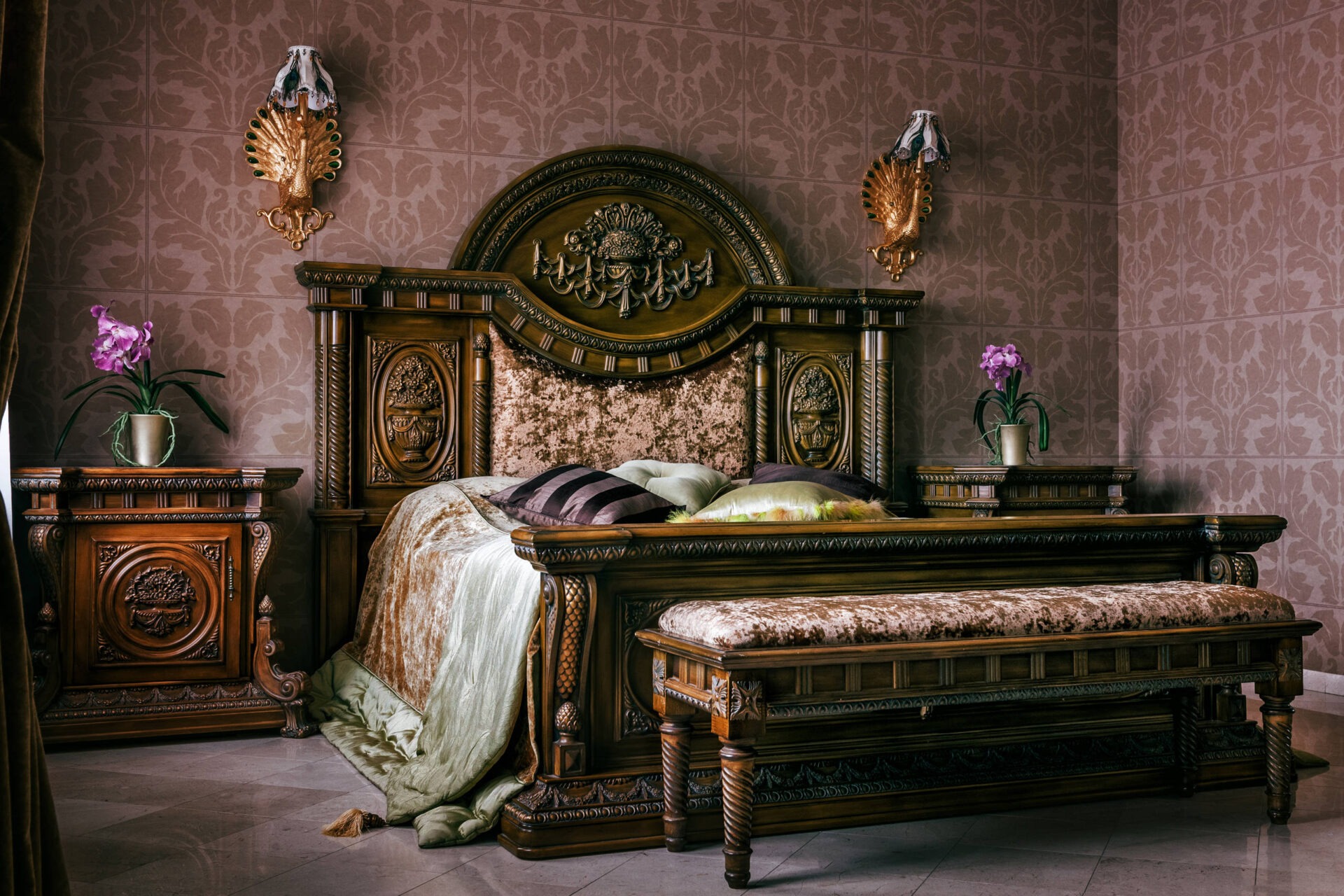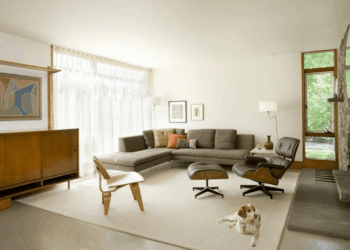When we delve into the realm of architectural styles that have etched an indelible mark on the design world, one rises above the rest as a true paragon of timelessness – mid century modern. The exterior aesthetics of mid-century modern dwellings, with their unblemished lines, seamless fusion with the natural environment, and pragmatic elegance, continue to mesmerize homeowners and designers alike. This article takes a deep dive into the quintessence of mid-century modern design and offers insights into how you can imbue your home’s exterior with this everlasting allure.
Table of Contents
1. Deciphering the Essence of Mid Century Modern Aesthetics
Streamlined Aesthetics and Minimalism
Mid-century modern design, often referred to as MCM, boasts a hallmark of unadorned, clean lines and an unwavering commitment to minimalism. Exteriors of MCM residences are devoid of embellishments, allowing the essence of simplicity to reign supreme. The emphasis here lies on form and function, culminating in an aesthetic that radiates effortless sophistication.
Harmonious Integration with Nature
The mid-century modern ethos pivots on the idea of wholeheartedly embracing the surrounding environment. Vast windows and glass walls dissolve the demarcation between the indoors and outdoors, ushering in natural light to flood the inner sanctums. The integration of organic materials further nurtures this communion with nature.
Form as an Extension of Function
Every facet of a mid-century modern home serves a purpose. Whether it’s the placement of windows to optimize natural ventilation or the architectural choreography of a roofline that provides shade, functionality takes precedence. Here, form dutifully follows function, engendering spaces that coalesce beauty with practicality.

2. Tracing the Historical Footprints
The mid-century modern movement took root in the mid-20th century, approximately spanning the 1940s to the 1960s. It emerged as a poignant response to the ornate and ponderous design sensibilities that had held sway in the preceding eras. Architects and designers of this epoch aspired to craft a revitalized and forward-looking aesthetic that resonated with the evolving zeitgeist.

3. Visionary Architects and Designers
Numerous luminaries in the realm of architecture and design significantly contributed to the mid-century modern movement. The names of Frank Lloyd Wright, Charles and Ray Eames, and Eero Saarinen are virtually synonymous with MCM design. Their groundbreaking ideas and iconic creations continue to cast a long shadow on modern architecture.

4. Elements that Define Mid Century Modern Exteriors
Elegant Rooflines and Overhangs
The quintessential mid-century modern home showcases distinctive rooflines as a defining characteristic. Flat or gently sloping roofs graced with broad overhangs are the order of the day. The iconic butterfly roof, with its V-shaped upward slope, stands out as a paradigmatic example. These rooflines serve a dual purpose, providing shade and shelter while bestowing a visually arresting dimension.
Prolific Use of Expansive Windows and Glass Walls
Nothing captures the essence of mid-century modern quite like the generous incorporation of glass. Immense windows, often sporting geometric configurations, are deployed to harness copious natural light and offer unimpeded vistas of the exterior. Glass walls, at times extending from floor to ceiling, establish a seamless continuum between the interior and exterior realms.
Embrace of Natural Materials and Textures
Mid-century modern homes luxuriate in the lavish use of natural materials such as timber, stone, and concrete. Exposed wooden beams and ceilings inject warmth into the exterior milieu. Stone or concrete accent walls bestow texture and contrast. The amalgamation of these materials engenders a harmonious confluence of the human-made and the innate.
Expansive Outdoor Spaces
The mid-century modern design ethos fervently champions the concept of outdoor living. Dwellings frequently feature capacious patios, courtyards, or decks that function as extensions of the internal spaces. These areas constitute idyllic settings for al fresco dining, social gatherings, or merely basking in the splendor of the environment.
Minimalist Landscaping
Landscaping in the vicinity of mid-century modern residences usually adheres to a philosophy of simplicity that resonates with the overarching design. Crisp lines, meticulously manicured lawns, and strategically positioned shrubbery or trees amplify the appeal of modernist aesthetics. Native flora and drought-resistant landscaping have earned favor among adherents.
5. The Artistry of Mid Century Modern Color Palettes
Mid-century modern color schemes are an intriguing exploration in contrast. While earthy tones and neutrals govern the overarching ambiance, audacious bursts of color are punctiliously employed. These vibrant splashes of color proffer visual intrigue and establish focal points.
Earthy Tones and Neutrals
The bedrock of MCM color palettes is firmly entrenched in earthy hues like beige, brown, and gray. These neutral tones underpin a calming backdrop against which the bolder facets of the design can vividly unfurl.
Dramatic Flourishes of Bold Colors
To infuse verve and vivacity, mid-century modern design judiciously incorporates striking bursts of color. Think of resplendent oranges, cheerful yellows, and verdant greens. These dynamic hues frequently grace furniture, decor, and even accent walls, imbuing the surroundings with a palpable dynamism.
Muted Tones for Equilibrium
To harmonize the interplay between the subdued neutrals and the exuberant hues, mid-century modern design adopts muted colors such as mustard, olive green, and teal. These understated tones endow the color palette with depth and sophistication.
6. Rekindling Mid-Century Modern Design in the Present
The allure of mid-century modern design endures, with numerous homeowners yearning to infuse their abodes with this iconic style. Whether you possess the privilege of owning an original mid-century gem or simply harbor an appreciation for its aesthetics, avenues abound for embracing this design ethos in the contemporary era.
Modern Interpretations
While uncovering an original mid-century modern home can prove challenging, a multitude of contemporary residences draw inspiration from this era. Seek out builders and architects who specialize in crafting modern homes imbued with mid-century flair.
Scouring for Mid-Century Modern Homes
For those actively seeking an authentic mid-century modern residence, it’s prudent to enlist the guidance of real estate professionals well-versed in architectural properties. They can adeptly navigate the market terrain, facilitating the discovery of your dream MCM domicile.
Modernizing Mid-Century Exteriors
If you are already the proud owner of a mid-century modern home, contemplate enhancements that bolster its energy efficiency and sustainability. Swap single-pane windows for energy-efficient alternatives, and ponder the adoption of solar panels to mitigate your carbon footprint.
Sustainable Upgrades
Mid-century modern residences provide an apt canvas for sustainable upgrades. Incorporating insulation, upgrading HVAC systems, and integrating smart home technology can render your MCM abode both eco-friendly and amenable to contemporary living.
Embracing Contemporary Technology
Present-day technology empowers you to seamlessly oversee your home’s lighting, climate control, and security systems. Assimilating these modern conveniences into your mid-century modern residence ensures its continued relevance in the 21st century.
7. Furniture and Decor that Embodies Mid Century Modern Exteriors
Iconic Outdoor Furniture
To authentically encapsulate the mid-century modern ambiance, consider investing in iconic outdoor furniture pieces. The likes of the Eames lounge chair, the Adirondack chair, and the Noguchi coffee table epitomize timeless design, elevating your outdoor spaces to new heights of sophistication.
Textiles and Accouterments
Mid-century modern aesthetics seamlessly extend to textiles and decor elements. Seek out outdoor rugs, cushions, and throw blankets adorned with geometric motifs and vibrant hues. Vintage or vintage-inspired accessories such as ceramic planters and outdoor wall art impart character and allure.
Creating an Alfresco Sanctuary
Transforming your outdoor domain into a veritable sanctuary involves the incorporation of elements like an outdoor fireplace, a cozy seating enclave, and ambient illumination. Mid-century modern exteriors are thoughtfully crafted to be hubs of relaxation and indulgence.
8. Nurturing the Pristine Charm of Your Mid Century Modern Exterior
Meticulous Upkeep
To safeguard the integrity of your mid-century modern exterior, adhere to a regimen of systematic maintenance. Regularly inspect the roof for signs of wear, keep the extensive windows in immaculate condition, and verify the soundness of the natural materials employed in the construction of your home.
Preservation of Authentic Features
If your mid century modern dwelling retains original features such as wood paneling, terrazzo flooring, or distinctive architectural elements, it’s incumbent upon you to undertake measures for their preservation. These features constitute invaluable facets of your home’s authenticity and allure.
In an ever-evolving milieu of design trends, mid century modern home exteriors remain an emblem of timeless grace and deliberate functionality. Whether you are rekindling the spirit of a classic mid-century gem or weaving MCM elements into a contemporary domicile, the allure of this design paradigm endures. With its seamless lines, symbiotic rapport with nature, and enduring resonance, mid-century modern design emerges as an eternal beacon of inspiration.
FAQs
Can mid century modern design principles be applied to newer homes?
Absolutely! Mid-century modern elements can be seamlessly integrated into modern homes, infusing them with an enduring sense of style.
What are cost-effective methods to achieve a mid century modern aesthetic for my home’s exterior?
You can realize a mid-century modern look without breaking the bank by focusing on key elements like paint, landscaping, and the strategic inclusion of decor items.
Are there specific plant choices or landscaping styles that complement mid century modern exteriors?
Succulents, ornamental grasses, and minimalist landscaping styles harmonize exquisitely with mid-century modern exteriors, accentuating their clean lines and understated elegance.
How can I incorporate sustainable features into my mid century modern home’s exterior?
Consider upgrading to energy-efficient windows, installing solar panels, and modernizing insulation to enhance your mid-century modern residence’s sustainability.
Where can enthusiasts of mid century modern design find online resources and communities for design inspiration?
Numerous online forums, social media groups, and design websites are dedicated to the celebration of mid-century modern design, offering a wealth of inspiration and opportunities for connecting with like-minded aficionados.
How do you make exterior look mid century modern?
To make the exterior look mid century modern, consider these steps:
- Clean Lines and Geometry: Incorporate clean, geometric shapes in architecture, such as flat roofs, angular designs, and asymmetrical facades.
- Natural Materials: Use materials like wood, stone, and glass to create a natural and sleek look.
- Large Windows: Opt for expansive windows that connect indoor and outdoor spaces while allowing plenty of natural light.
- Minimalist Landscaping: Keep landscaping simple with clean, straight lines and minimal clutter.
- Pops of Color: Add vibrant accent colors to doors, panels, or trim to capture the mid-century modern aesthetic.
How to make a house look mid century modern?
To make a house look mid century modern, apply these principles to both the interior and exterior design, emphasizing simplicity, functionality, and the use of natural materials.
What are the features of a mid century modern house?
Features of a mid century modern house include open floor plans, large windows, flat planes, and integration with nature. They often have exposed structural elements like beams and use a mix of traditional and non-traditional materials.
What are the best colors for mid century houses?
The best colors for mid century houses are typically muted and earthy tones for the exterior, such as warm browns, greens, and mustard yellows. For interiors, consider bold colors like teal, orange, and deep reds as accents against a neutral backdrop.
